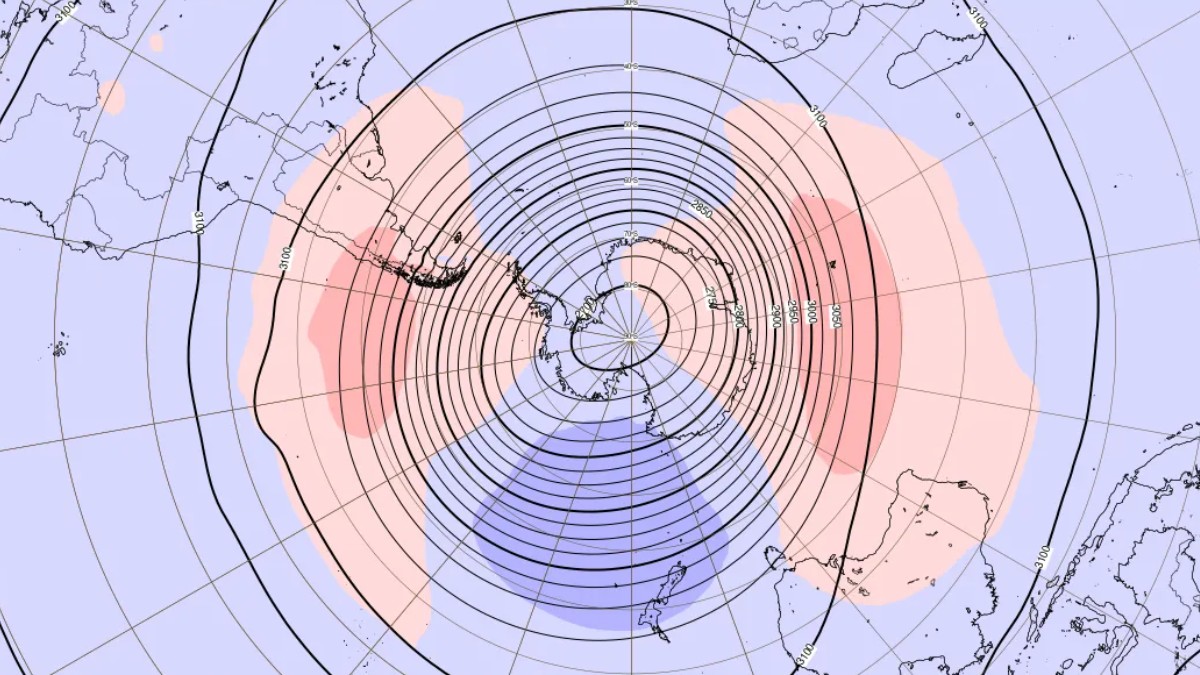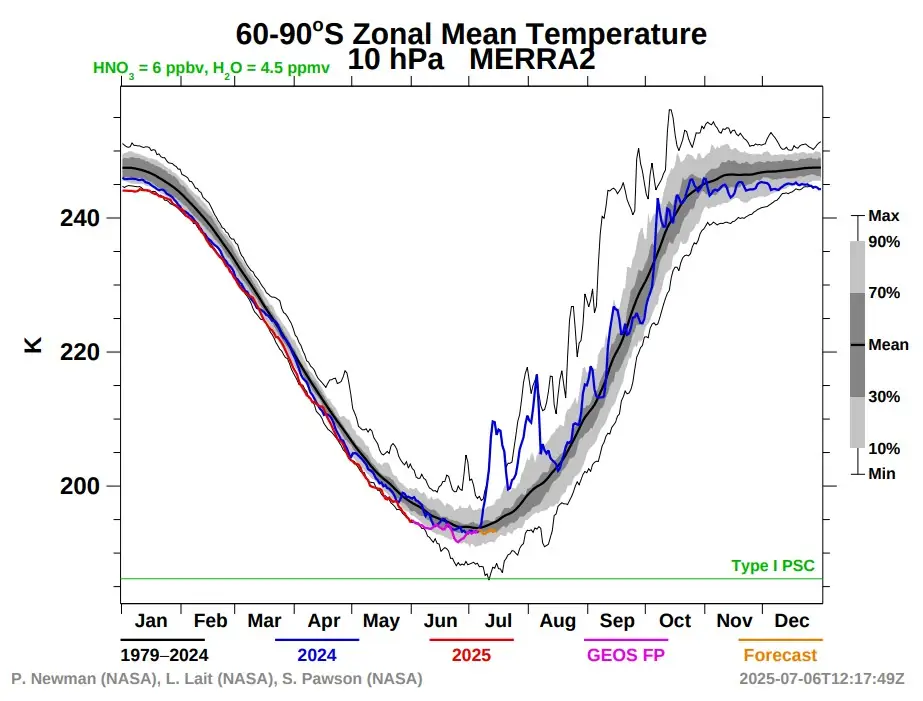Early stratospheric warming waves emerging around Antarctic polar vortex
The Antarctic stratosphere is showing initial signs of disruption, as early warming waves form around a persistently cold polar vortex core. Further intensification and broadening of the anomalies are forecast for July 2025.

Image credit: ECMWF, The Watchers
The latest NASA stratospheric analysis at the 10 hPa (31 km / 18.5 miles) level indicates the vortex core in the Southern Hemisphere remains colder than normal, with temperatures in the heart of the polar stratosphere well below the seasonal average.
Despite the persistent cold in the core, satellite observations and model data reveal the early development of warming waves in the outer layers of the polar vortex. These waves are associated with high-pressure anomalies, particularly over the eastern portion of the vortex, as seen in current and forecast pressure analyses.

Three-dimensional analysis tools, including StratObserve, show the polar vortex retains a mostly circular and stable structure. However, subtle deformations are now evident, consistent with the emerging warming waves and corresponding pressure anomalies.
These initial warming waves may precede more substantial stratospheric warming events, which often unfold in successive phases and can disrupt the polar vortex.
ECMWF and other model forecasts indicate that, through early and mid-July, high-pressure anomalies are expected to intensify over the eastern half of Antarctica, with temperature anomalies of 25–30°C (45–54°F) above average forecast. As the warming strengthens, above-normal temperatures are forecast to spread around the periphery of the polar region, increasingly displacing the cold vortex core.
Model guidance for the second week of July indicates that these warming anomalies will continue to evolve, with pressure and temperature disturbances encircling much of Antarctica. Notably, by mid-July, forecasts show the stratospheric warming anomaly reaching down to 50 hPa (19 km / 12 miles) in altitude. Downward propagation of such warming is relatively rare in the Southern Hemisphere and suggests a robust and persistent event.

Extended-range ensemble forecasts continue to indicate this warming pattern may last into the latter half of July, with stratospheric temperature anomalies expected to persist and affect a wide sector of the Antarctic polar vortex.
While a full-scale sudden stratospheric warming (SSW) event has not yet occurred, the ongoing intensification and downward reach of the warming waves increase the likelihood of further polar vortex disruption.
While the direct impacts of this SSW are confined to the southern hemisphere, analogies with similar northern hemisphere events suggest potential for broader atmospheric teleconnections.
“Stratospheric warming events are rare in the Southern Hemisphere but are usually very powerful and are known to have a global impact, likely even on the northern winter season,” Andrej Flis of Severe Weather Europe said.
References:
1 Rare Stratospheric Warming Waves emerge over the South Pole, with Unusually Strong anomalies around the Polar Vortex – Severe Weather Europe – June 26, 2025
I'm a dedicated researcher, journalist, and editor at The Watchers. With over 20 years of experience in the media industry, I specialize in hard science news, focusing on extreme weather, seismic and volcanic activity, space weather, and astronomy, including near-Earth objects and planetary defense strategies. You can reach me at teo /at/ watchers.news.


Commenting rules and guidelines
We value the thoughts and opinions of our readers and welcome healthy discussions on our website. In order to maintain a respectful and positive community, we ask that all commenters follow these rules.